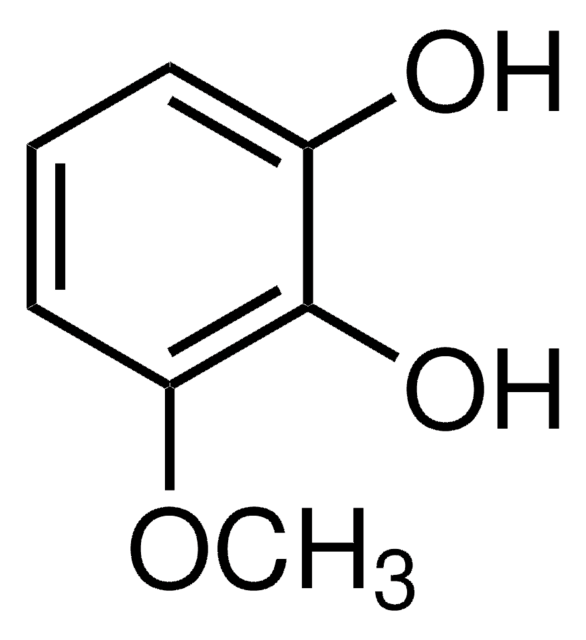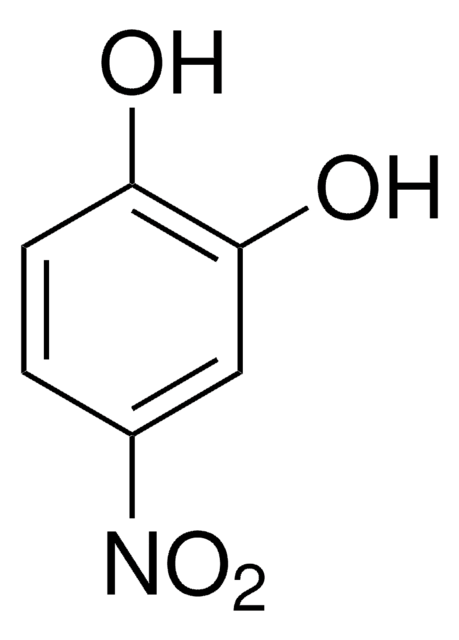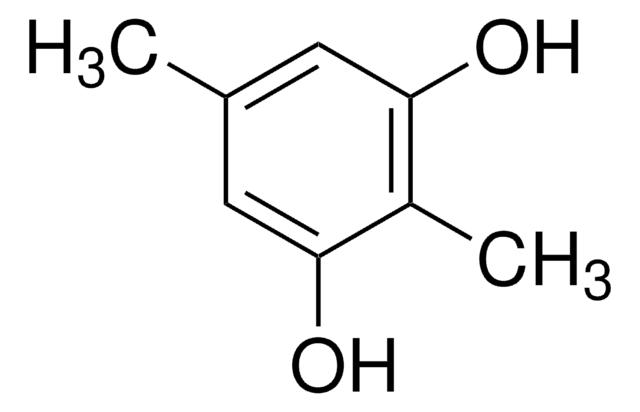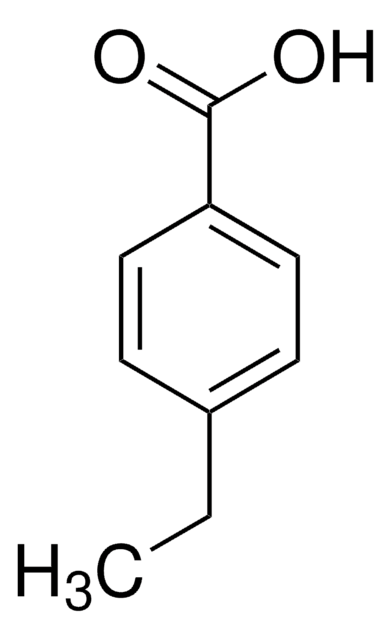683957
4-Ethylcatechol
95%
Synonym(s):
3,4-Dihydroxyethylbenzene
Sign Into View Organizational & Contract Pricing
All Photos(3)
About This Item
Empirical Formula (Hill Notation):
C8H10O2
CAS Number:
Molecular Weight:
138.16
EC Number:
MDL number:
UNSPSC Code:
12352100
PubChem Substance ID:
NACRES:
NA.22
Recommended Products
Assay
95%
form
solid
mp
34-45 °C
SMILES string
CCc1ccc(O)c(O)c1
InChI
1S/C8H10O2/c1-2-6-3-4-7(9)8(10)5-6/h3-5,9-10H,2H2,1H3
InChI key
HFLGBNBLMBSXEM-UHFFFAOYSA-N
Related Categories
Signal Word
Danger
Hazard Statements
Precautionary Statements
Hazard Classifications
Acute Tox. 4 Oral - Eye Dam. 1 - Skin Irrit. 2 - STOT SE 3
Target Organs
Respiratory system
Storage Class Code
11 - Combustible Solids
WGK
WGK 3
Flash Point(F)
>230.0 °F - closed cup
Flash Point(C)
> 110 °C - closed cup
Personal Protective Equipment
dust mask type N95 (US), Eyeshields, Gloves
Certificates of Analysis (COA)
Search for Certificates of Analysis (COA) by entering the products Lot/Batch Number. Lot and Batch Numbers can be found on a product’s label following the words ‘Lot’ or ‘Batch’.
Already Own This Product?
Find documentation for the products that you have recently purchased in the Document Library.
Customers Also Viewed
Gautam Gaur et al.
Applied and environmental microbiology, 86(5) (2019-12-22)
Phenolic acids are among the most abundant phenolic compounds in edible parts of plants. Lactic acid bacteria (LAB) metabolize phenolic acids, but the enzyme responsible for reducing hydroxycinnamic acids to phenylpropionic acids (HcrB) was only recently characterized in Lactobacillus plantarum
Nicholas S Kruyer et al.
Scientific reports, 10(1), 13367-13367 (2020-08-10)
Microbial production of adipic acid from lignin-derived monomers, such as catechol, is a greener alternative to the petrochemical-based process. Here, we produced adipic acid from catechol using catechol 1,2-dioxygenase (CatA) and a muconic acid reductase (MAR) in Escherichia coli. As
Robert Brüninghoff et al.
Environmental science & technology, 53(15), 8725-8735 (2019-07-10)
We evaluated electrochemical degradation (ECD) and photocatalytic degradation (PCD) technologies for saline water purification, with a focus on rate comparison and formation and degradation of chlorinated aromatic intermediates using the same non-chlorinated parent compound, 4-ethylphenol (4EP). At 15 mA·cm-2, and
Raffaele Guzzon et al.
Journal of food science and technology, 54(3), 810-821 (2017-03-17)
Careful control of spoilage microflora inside wine containers is a key issue during winemaking. To date, attention has been paid to the development of an effective protocol for the eradication of spoilage agents, especially
Mario Malacarne et al.
Food chemistry, 206, 274-283 (2016-04-05)
Commercial tannins from several botanical sources and with different chemical and technological characteristics are used in the food and winemaking industries. Different ways to check their botanical authenticity have been studied in the last few years, through investigation of different
Our team of scientists has experience in all areas of research including Life Science, Material Science, Chemical Synthesis, Chromatography, Analytical and many others.
Contact Technical Service














